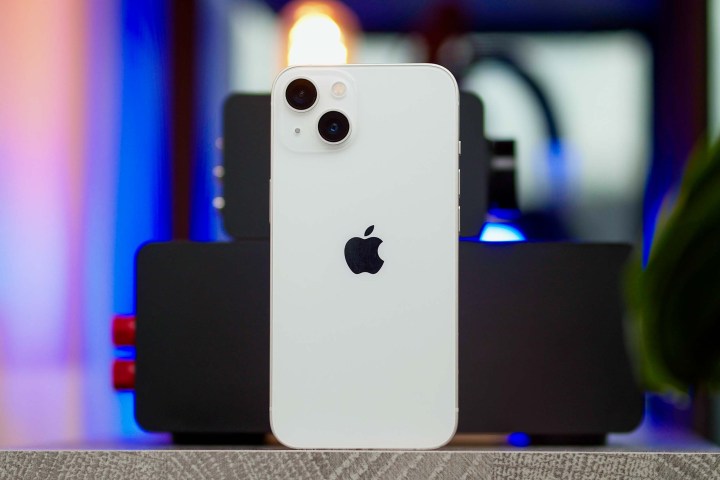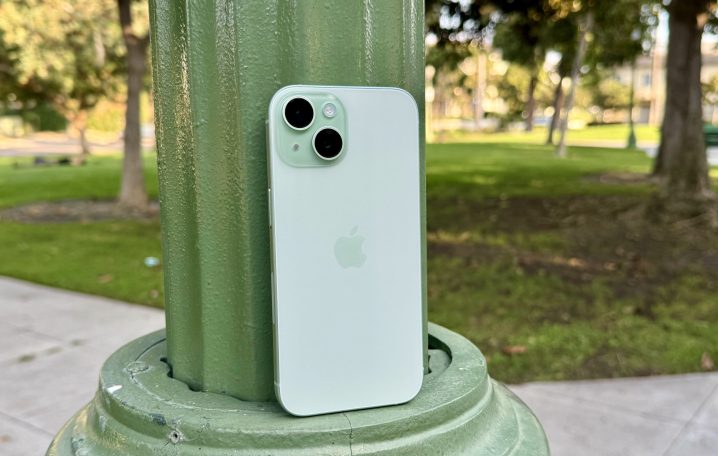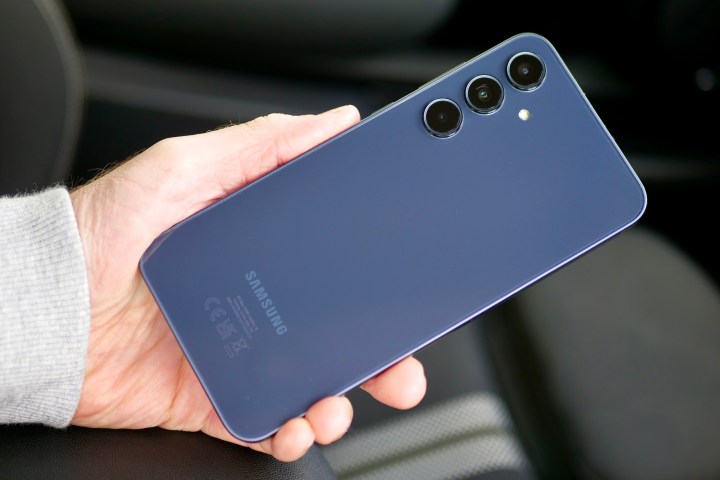While all eyes are on Apple for the next flagship iPhone 16 lineup, not everyone wants or even needs a phone that starts at almost $1,000 or more. For that demographic, Apple offers the iPhone SE (2022), which is considered its budget-friendly option.
The Apple iPhone SE (2022) is the iPhone for those who don’t need fancy bells and whistles. Heck, it still has a home button, which Apple abandoned the moment it moved on to Face ID. All things considered, it’s a good size for those who prefer not to have gigantic phones.
But the iPhone SE is a little dated at this point, considering that Apple hasn’t updated it in two years. Even when it came out, it was running an older processor, and while the camera is decent, it’s far from the best.
Here are some alternatives you could consider instead of the iPhone SE (2022).
iPhone 13 or iPhone 14

For those who are considering an Apple iPhone SE, it’s likely because it’s the cheapest iPhone Apple offers. But again, it runs the older A13 Bionic chip and still has an LCD display, a home button, and a single 12-megapixel camera.
If you still want a relatively cheap iPhone and don’t mind not having a home button, you could consider the iPhone 13 or iPhone 14 instead. These two phones are almost the same, with some very minor differences that we’ll get to in a minute.
The iPhone 13 and iPhone 14 both have a 6.1-inch OLED display that looks much better than the LCD on the iPhone SE (2022). With OLED, you’ll get richer colors and deeper blacks, which matters when you like to consume content on your mobile device, especially since there is also more screen estate with the lack of a home button.
Apple put the A15 Bionic in both the iPhone 13 and iPhone 14, so you get faster performance. Both phones can also run iOS 18 just fine, though you won’t get the Apple Intelligence features. For the cameras, both sport a dual camera system with 12MP main and 12MP ultrawide lenses and can do Portrait mode, night mode, Cinematic mode video, and more. On the front, you also get a 12MP selfie camera, which beats the 7MP of the iPhone SE.

Connectivity-wise, the iPhone 13 and iPhone 14 both support 5G cellular speeds and offer storage options from 128GB to 512GB. That’s plenty of room for your downloads and media.
The biggest difference between the two is that Apple added more safety features with the iPhone 14. So, while the iPhone 13 still has the Emergency SOS feature (just like the iPhone SE), the iPhone 14 added Emergency SOS via satellite, Crash Detection, and even Roadside Assistance via satellite. These features are not something you want to actually use, but they can literally save your life when you need them.
The Apple iPhone 13 starts at $599 for the 128GB model, while the iPhone 14 starts at $699 for 128GB. If you want that extra peace of mind, the iPhone 14 is worth it.
iPhone 15

While many people are likely considering the iPhone SE because of its inexpensive price point, if you can swing it, the iPhone 15 is definitely worth picking up instead.
Like the iPhone 13 and iPhone 14, the iPhone 15 also has an OLED display that looks great with vibrant colors and deep, silky blacks. But the iPhone 15 takes things a step further with the Dynamic Island, replacing the notch from previous generations. The Dynamic Island is a whimsical new way to view notifications, interact with apps in the background, and give you status indicators at a glance. It’s more useful than the notch, which did nothing.
The A16 Bionic inside the iPhone 15 is also the same as what Apple used in the iPhone 14 Pro, so you get blazing-fast performance. The iPhone 15 also has a dual camera system with a 48MP main camera and a 12MP ultrawide lens, and regular photos can be up to 24MP in resolution. This means higher-quality photos with more detail and color. The selfie camera is 12MP.
Furthermore, you also get access to the MagSafe ecosystem of accessories, which have been popular and very useful. The Apple iPhone 15 is definitely a bit more money than the iPhone SE (2022), but those extra features are worth it if you ask us.
Google Pixel 8a

Those who considered the iPhone SE (2022) because it’s an inexpensive phone but who also don’t mind jumping to Android should consider the Google Pixel 8a.
The Pixel 8a has a similar design to its larger siblings: the Pixel 8 and Pixel 8 Pro. That design features more rounded corners than before and the classic camera bar on the rear, and though the Pixel 8a has a plastic rear instead of glass, it still looks great with the matte finish. Plus, it comes in fun blue and green colors, which you don’t get with the iPhone SE.
Despite being a budget phone, the Pixel 8a has some impressive display technology and specs. The 6.1-inch always-on display is OLED and has a refresh rate of 120Hz, which blows the iPhone SE (and even the base model iPhone 15) out of the water. Inside, you’ll find the Tensor G3 chip, which is Google’s in-house processor, 8GB RAM, and either 128GB or 256GB storage.
Google’s Pixel phones are known for having great cameras, and the Pixel 8a is no exception. It has a 64MP main camera and a 13MP ultrawide lens packed into that rear camera bar, which already outclasses the iPhone SE (2022) by far. The front has a 13MP selfie camera. And with Google’s suite of AI photo tools, like Magic Eraser, Magic Editor, and Best Take, you have everything you need for the perfect photo.
The Pixel 8a starts at $499, which is a little more expensive than the iPhone SE (2022), but frequent deals and sales can easily knock that price down.
OnePlus 12R

Another phone worth checking out is the OnePlus 12R, again, as long as you don’t mind going Android.
For $500, the OnePlus 12R really gives you a lot of bang for your buck. In fact, it’s pretty much delivering 2023 flagship specs for half the price of other high-end phones. It easily beats what the iPhone SE (2022) has to offer.
With the OnePlus 12R, you get a massive 6.78-inch AMOLED panel with 2780 by 1264 resolution, which is 450 pixels per inch (ppi). That’s incredibly sharp and crisp — the colors are vibrant, and the blacks are deep. You also get a 120Hz refresh rate and an incredible 4,500 nits of peak brightness. The only downside? Aside from the huge screen, if you’re not a large phone fan, is that the screen has curved edges. This can lead to accidental touches on the display, which then mean actions that you didn’t mean to do. It takes some time to get used to, but otherwise, it’s a fantastic display.
And when you take a look at the inside of the OnePlus 12R, it’s just as impressive. It uses a Snapdragon 8 Gen 2 chip, which was used in almost all of 2023’s flagship phones, from the Samsung Galaxy S23 Ultra to the OnePlus 11. So even though it’s one year old, it still has incredibly fast performance and power. The base model has 8GB RAM, but you can upgrade the OnePlus 12R with up to 16GB RAM, which is enormous for a phone.
As far as cameras go, the OnePlus 12R has a decent setup with a 50MP main camera, 8MP ultrawide, and a 2MP macro lens. The front has a 16MP selfie camera. Unlike the OnePlus 12, the OnePlus 12R does not have Hasselblad image processing or color tuning. Despite that fact, you’ll still get some mostly good shots with the main camera, though the ultrawide and macro aren’t as impressive.
But for battery life and charging, you can’t beat the OnePlus 12R. It has a massive 5,500mAh battery that could. last around two full days, depending on use. And when you do need to charge it up, the 80W wired charging — yes, 80W — will get you back up to speed in 30 minutes or less. The 80W speeds are for the U.S., but other regions get even faster speeds at 100W. This does come at a cost, though, because you don’t have wireless charging.
Samsung Galaxy A35

Another good and inexpensive alternative is the Samsung Galaxy A35. For only $400, you get a phone that looks very similar to Samsung’s flagship S-series devices, along with comparable specs.
Again, the design of the Galaxy A35 looks similar to the Galaxy S24 with a few minor differences. It has a plastic chassis that is actually quite comfortable to hold, and the volume and power buttons are on a raised section on the side. It also comes in a few different colors too. For the display, you get a 6.6-inch Super AMOLED screen with 120Hz refresh rate, 2340 by 1080 resolution, and maximum brightness of 1,000 nits. That easily leaves the iPhone SE (2022) in the dust.
Inside the Galaxy A35 is an Exynos 1380 chip, and it comes with 6GB, 8GB, or 12GB RAM, depending on the configuration you choose. It also has either 128GB or 256GB storage, but this is expandable through a microSD card slot in the SIM card tray. Though the processor is not the best out there, it’s still good enough for casual use and performance. The Galaxy A35 has a 5,000mAh battery inside, which should last around two days on a single charge, provided you don’t push it too hard. The charging speed isn’t super fast, as it only goes up to 25W. So that means about 50% charge in 30 minutes, which is typical.
For cameras, the Galaxy A35 has a 50MP main camera, an 8MP ultrawide lens, and a 5MP fixed-focus macro camera. There is also a 13MP selfie camera. As long as you stick with the main and selfie cameras, you should get decent photos with bright and vibrant colors. The ultrawide lens is not too great, as it results in soft details and dull, washed-out colors.
Still, for $400, the Galaxy A35 is a decent option from Samsung and definitely offers more than the iPhone SE at a similar price.



